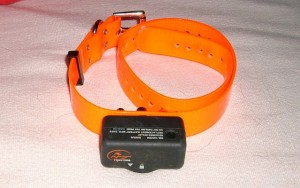Assumptions aren’t that difficult to come by. Someone starts a trend or fad and other people jump right on the bandwagon without bothering to check the facts, be it electric dog collars, invisible dog fences or just some magical pet supplement. Let's take the 1950's as an example. Everyone smoked cigarettes back then, but after the American Cancer Society stepped in and produced information about the health risks, smoking rates dropped.
Much in the same way that smoking was once thought to be no big deal, electric dog collars for dogs are a common practice that needs to be nixed immediately as well. They’re not only inhumane; they also cause more problems than they correct. Later in this article, we’ll discuss alternatives to dog shock collars that are just as effective.
The Association of Pet Behavior Counselors advises that the use of tools that rely on pain or discomfort to modify a dog's behavior are inappropriate because they have the potential to seriously compromise the welfare of the canine. They also believe these types of devices ruin the relationship between the dog and his owner. Shock collars for dogs fall into this category without a doubt.

Electronic dog collars are a “quick fix” device that most pet owners use so they don't have to spend time and energy training their pet. It may sound tedious to have to spend hours and hours on behavior training when you could just easily use a shock collar to train your pet in a matter of minutes, but that time isn't just about the training.
It's all about the bonding, communication, and trust that is being built between you and your Fido.
Don't jump on the bandwagon of trading convenience for inhumane treatment. Dogs are intelligent creatures that can easily learn with a little time and patience. Most pet owners see their canine companions as members of the family, so stop and think for a minute before you equip your pooch with an electric dog collar: would you attach that device to any other member of your family?
Stay Humane: Myths and Facts About Electric Dog Collars
To suggest that every dog owner that puts a shock collar on their dog is a cruel person is presumptuous and incorrect to say the least.
Most pet parents are probably ignorant to the damages that shock collars can do and, since shock collars are considered to be old hat and tried-and-true, they’re not being taken off the market the way they should. Even though some countries, such as Wales, have already banned the use of electric shock collars on dogs altogether.
[optin-monster-shortcode id=”mmevqhqfl46p1is5″]
Some owners are unaware of existing other options available that are equally as effective at training canines, and a million times more humane than electric dog collars (noted in the article linked below) — they do not know their choices. Also, promises that each dog collar is safe and danger-free are made by shock collar companies and those seem to ease owners’ concern as well.
RELATED: No More Pain – Best Alternatives to Dog Shock Collars
As anyone who has ever owned a piece of technology knows, electronic devices can malfunction without warning or reason. Shock collars for dogs are no exception. An electronic bark collar that goes haywire may continuously jolt your dog and if you’re not there to remove it, the shocks can go on and on and continue to cause skin damage, psychological impairment, and a whole host of other problems.

Go on YouTube and search “human electric fence reactions.” Once you get past the fact that people actually made the perplexing decision to subject themselves to electrocution, you’ll see how bad electric fences and shock collars are. The humans themselves seem surprised by the amount of pain they feel. If it’s that bad for a human, imagine how it feels for a dog!
Dog owners that are oblivious to the dangers of electric dog collars and electric dog fences aren’t bad people; they’re just uninformed. With some quick research or a chat with a veterinarian (or other dog health and wellness professional) you will surely see how detrimental electric shock collars are. Hopefully, after reading this, you’ll decide to get rid of the collars and try other tactics and techniques.
Negative Effects of Dog Training Collars
If you’re a shock collar-using dog owner, I hope your attention is caught enough that you’re willing to listen to the effects that electronic training collars have on dogs. A study conducted by Matthijs B.H. Schilder and Joanne A.M. Van der Borg at the Department of Clinical Sciences of Companion Animals at the University of Utrecht revealed some alarming results about the consequences of using shock collars on dogs.
The shocked dogs tested in the study showed more stress signals than canines trained without a shock. Their ear positions were also lower and they associated their owner with physical pain. This association made them scared and apprehensive of their owners. The dogs began to cringe in pain and fear even after not being shocked for a long period of time.

Schilder and Van der Borg also found that the shocked dogs became averse to the mere presence of their handler. In an attempt to get their dog to obey, the owners actually caused more of a rift and distance to form between them and their dog, which is likely not the intention of any pet owner who uses training collars on dogs today.
The welfare of dogs was found by multiple studies to be in serious jeopardy if the usage of shock collars continued.
In fact, organizations that have come out against the usage of shock collars include PETA, the Humane Society, the UK Association of Pet Trainers, and more. Some countries have even banned police dog training tactics involving electric shocks.
RELATED: High Frequency Training – How to Use Dog Whistles
Being shocked is not just annoying and surprising. It is also painful. Though dogs aren’t like humans and cannot verbalize their agony, the behaviors that they exhibit when being shocked mirror those of physical pain and intense fear. Squeals, barks, and yelps are emitted and they often attempt to bite as a symptom of pain-induced aggression.
Pairing an electric shock with the wrong stimuli is the most distressing effect of shock collars. The dog’s confusion and inability to understand why he's being punished leads to long-term behavioral problems and psychological conditions such as anxiety, inexplicable aggression, and avoidance of his owner. Anxiety is not just a problem that affects humans—canine anxiety is very real and very harmful as well.
Alternatives to Electric Dog Collars
Despite the negative effects that shock collars have on dogs, some people may not be convinced. This could stem in part from the fact that they see no other alternative to shock collars and are worried that they’ll end up with a disobedient dog (though a dog that disobeys is better than a cowed, fretful one).

Fortunately, there are other options for dog parents. First and foremost is behavioral training, which should be implemented regardless of any products purchased. Teaching your dog the right way to behave through persistent and repetitive instruction is far more impactful than just electrocuting him when he does something wrong.
RELATED: Adopting a Puppy? You Will Need These Puppy Training Supplies
Use positive reinforcement when training your dog; dogs love food and giving your pet treats in moderation is an excellent way to associate good behavior with a great reward. Praise and attention are also great forms of positive reinforcement. Instead of showing your dog what you don't want him to do, try reinforcing the good behavior. You may be surprised how easily your pup catches on, and you'll certainly feel better about it too.
Erecting an actual fence is an option when it comes to keeping your dog inside the boundaries of your property. Polyethylene fences are available that are nearly invisible to the naked eye and will prevent your dog from running away. They don’t shock your pet and are still just as effective.
Citronella collars are a humane way to curb negative behavior as well. Dogs hate the smell of the substance and instead of a painful shock; they get an irritating burst of citronella sprayed into the air around them. While certainly annoying, it is not painful, and can be equally as effective if used correctly.
If you own an electric dog collar, view this as your call to action: get rid of the collar and switch to one or all of the methods listed above. Shock collars are inhumane and we as humans owe it to our beloved canine companions to remove anything that could have detrimental effects on their health and happiness.
If this article isn't enough, do your own research. Look up trusted sources, talk with your veterinarian, speak with a professional dog trainer and decide for yourself. Electric shock collars are an outdated training tool, and there are new devices on the market ever day that can help you train your pet more effectively.













